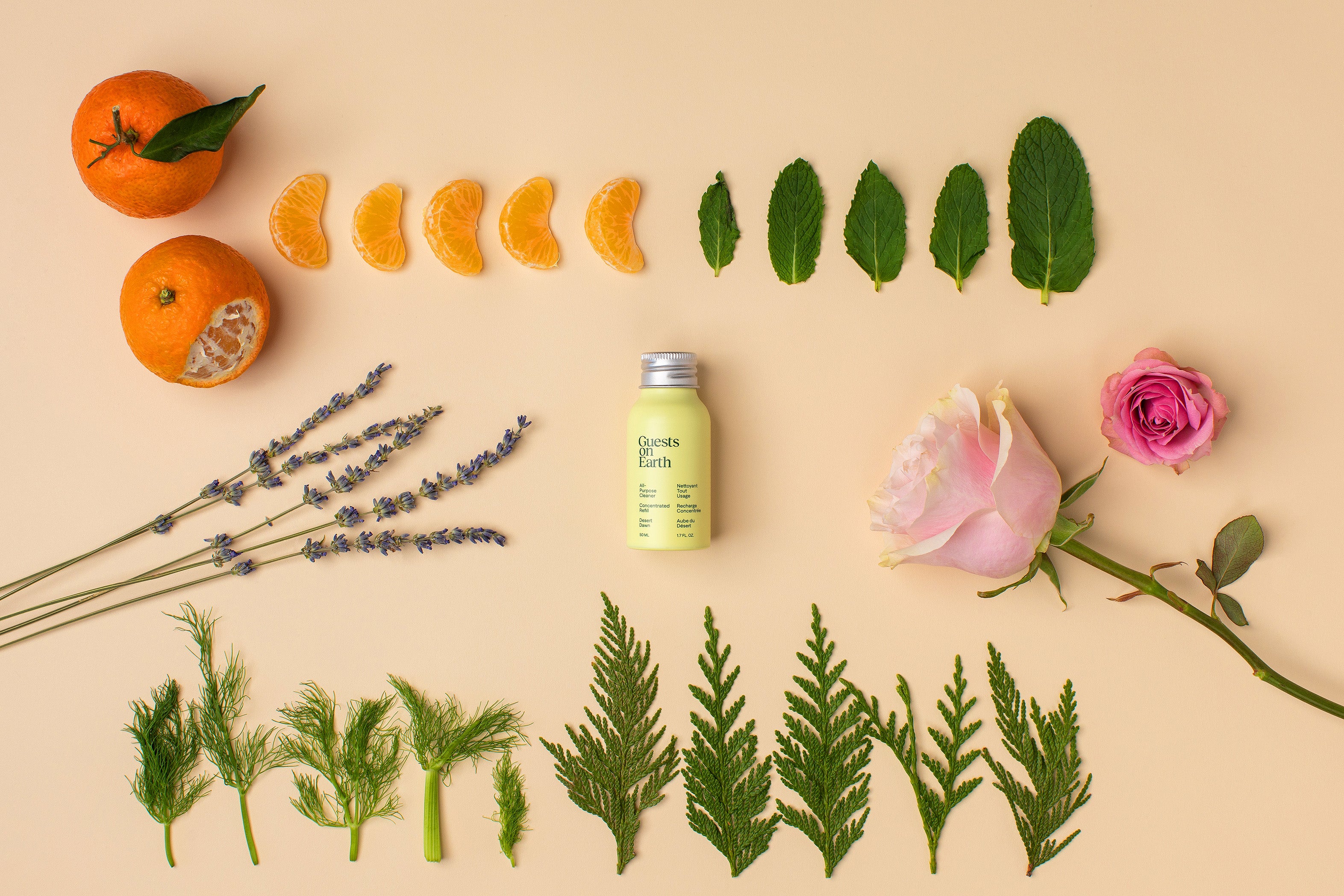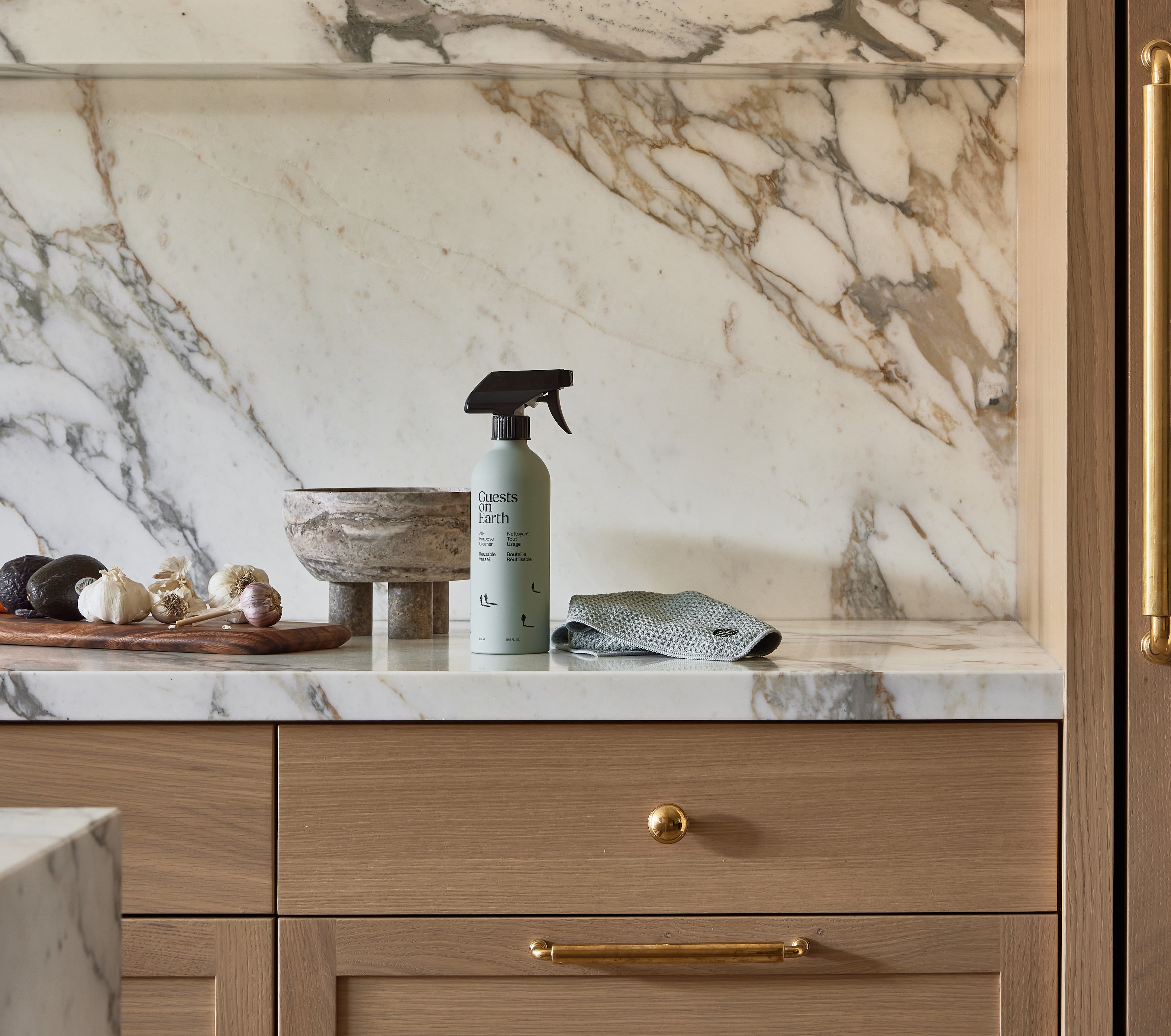High Standards, High Quality
Only the Good, None of the Bad
We went through tens of different formulation iterations to meet our high product and ingredient standards. Identifying the best all-natural substitutes for traditionally chemical ingredients, to ensure that each product experience is healthy for you and the planet.
Each of our ingredients is checked against P65, Cradle to Cradle, the Environmental Working Group and Whole Foods' Banned List.
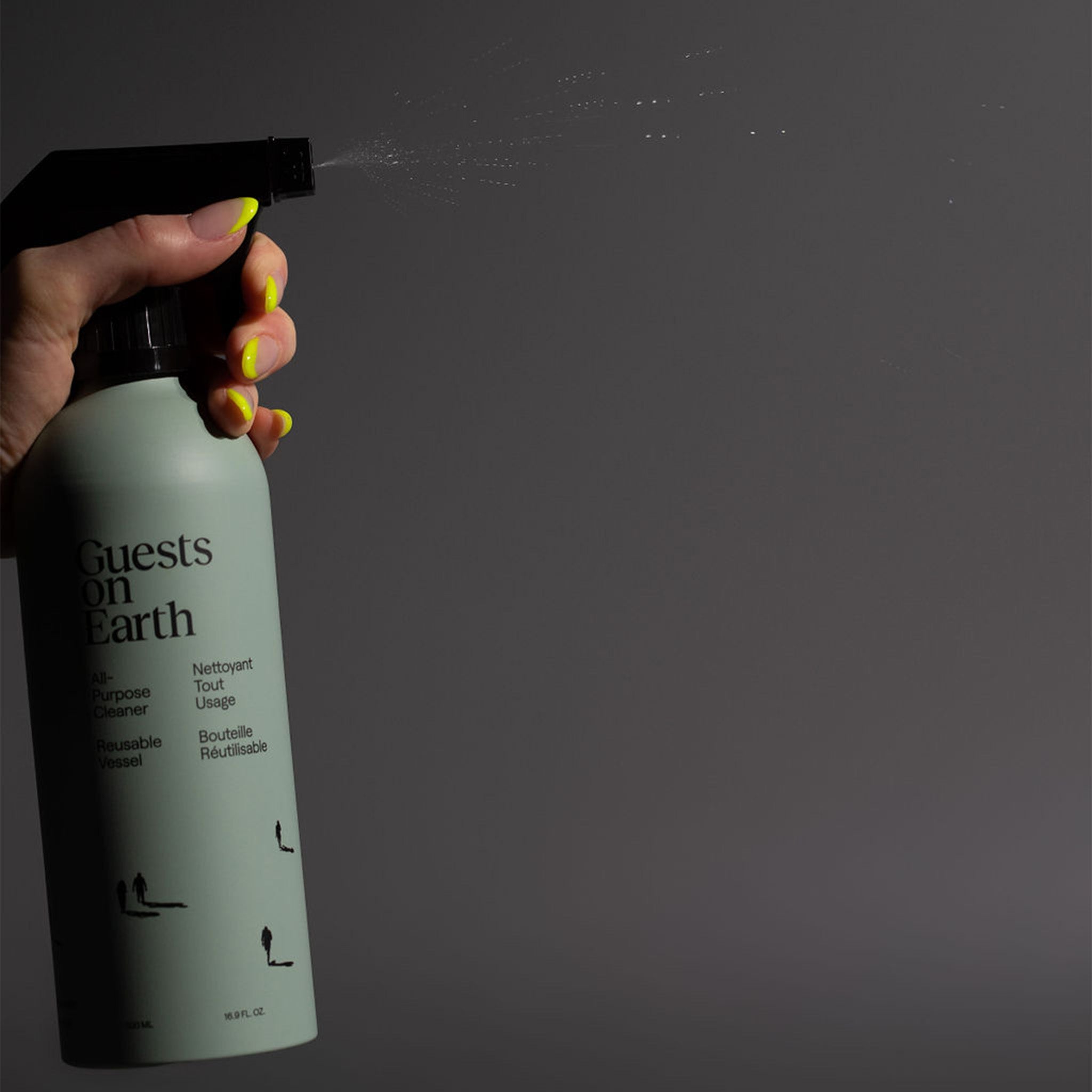
All-Purpose Cleaner Concentrate
Learn about our ingredients: what each does, where it's derived, how we use it, and the EWG (Environmental Working Group) Skin Deep Score.
EWG Skin Deep Scoring: 1-2 high safety, 3-6 moderate safety, 7-10 low safety.
Purified Water
What is it? Water! It's used in the formulation of virtually every type of cosmetic and personal care product.
Derived from: Water.
How we use it As a diluent, to help disperse other ingredients.
EWG score: 1
Disodium Coco-Glucoside Citrate
- What is it? A surfactant and emulsifier.
- Derived from: Sugar, corn and coconuts
- How we use it: As a primary surfactant, it’s the workhorse of this formula. It’s also an emulsifier, which helps to keep the ingredients mixed up and helps to clean oil and grease.
- EWG Score: 1
Capryl Glucoside
- What is it? A natural, mild, solubilizing non-ionic surfactant that is ideal for all foaming (hand wash, body wash, shampoos, dish wash) and cleansing products.
- Derived from: Corn and coconut oil.
- How we use it: Capryl Glucoside helps the formula clean quicker because it is “fast wetting”. It also helps to reduce residues and deposit our signature scents throughout the formula.
- EWG score: 2
Cocamide DIPA
- What is it? A gentle and mind degreaser.
- Derived from: Coconut
- How we use it: This ingredient helps to break down tougher greases and oils, accelerating the time they take to dissolve.
- EWG score: 1
Sodium Gluconate
- What is it? Sodium gluconate is a white crystalline powder that is a salt of gluconic acid, a compound found naturally in fruits and honey.
- Derived from: Sugar, carbohydrates (fermented)
- How we use it: It helps disperse the formula (helps the ingredients move around and remain active). Sodium gluconate also to remove detergent and creates less residue.
- EWG score: 1
Disodium Glutamate Diacetate
- What is it? A fully biodegradable binder, replacing EDTA (ethylenediamine tetraacetic acid), which is not biodegradable and is found in most common household cleaners.
- Derived from: Glutamic acid (an amino acid abundant in nature).
- How we use it: To soften hard water, so that the detergents can do their job.
- EWG score: 1
Sodium Bicarbonate
What is it: Good old baking soda. Sodium Bicarbonate is a natural disinfectant (against certain bacteria and fungi) and sanitizer that’s effective against various microbes while being non-corrosive and non-toxic to food and food contact surfaces.
Naturally derived from: Baking soda
How we use it: For its natural sanitizing properties at cleaning surfaces.
EWG score: 1
Potassium Carbonate
- What is it? A biodegradable, non-toxic white salt used in many soaps and eco-friendly laundry detergents.
- Derived from:
- How we use it: As a builder, but most importantly, to adjust our pH – to improve our cleaning power.
- EWG score: 1
Citric Acid
- What is it? A naturally occurring antioxidant. It is odourless and looks like small, clear crystals, similar to table salt.
- Derived from: Citric acid is naturally found in citric fruits and juices, like lemon.
- How we use it: As a chelator. It’s effective for removing soap scum, hard water stains, calcium deposits, lime and rust.
- EWG score: 1-2
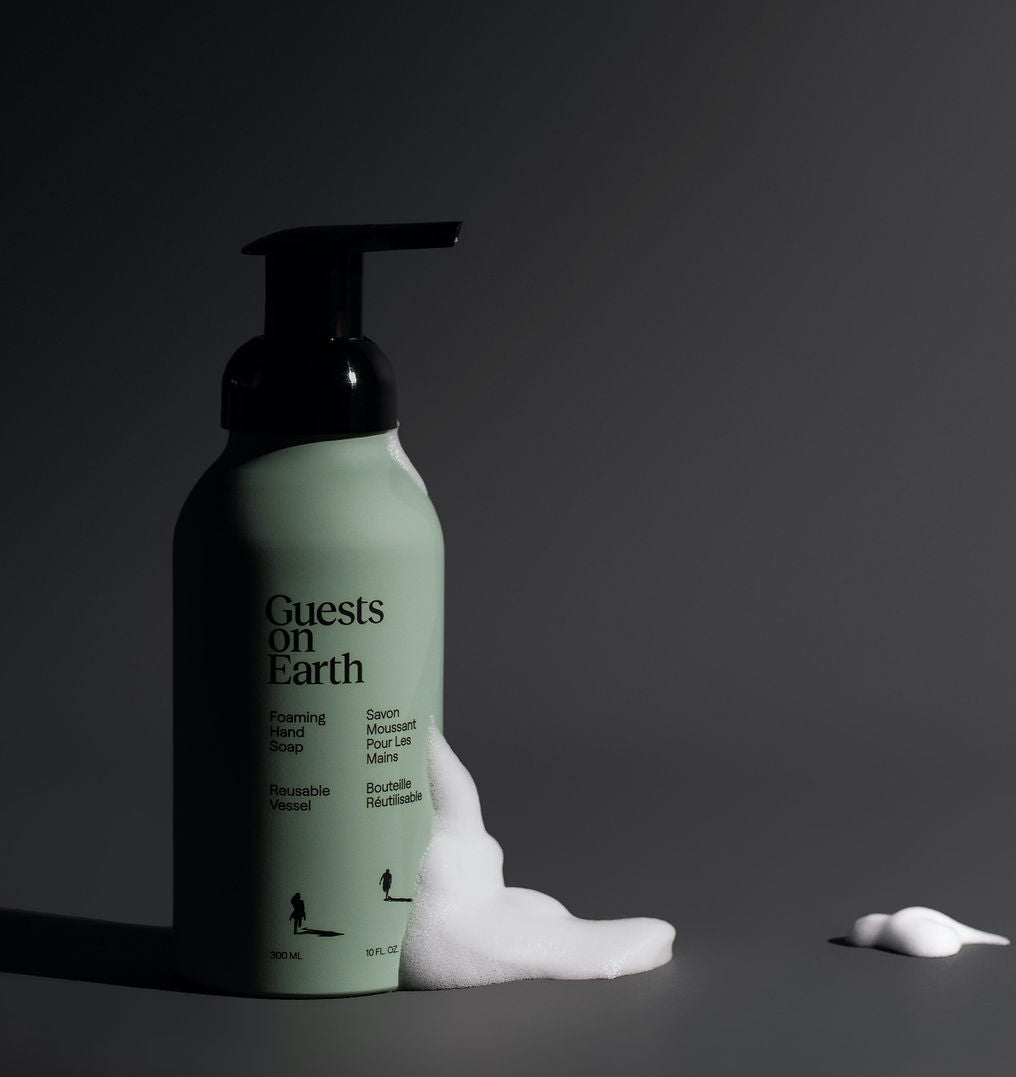
Foaming Hand Soap Concentrate
Learn about our ingredients: what each does, where it's derived, how we use it, and the EWG (Environmental Working Group) Skin Deep Score.
EWG Skin Deep Scoring: 1-2 high safety, 3-6 moderate safety, 7-10 low safety.
Purified Water
What is it? Water! It's used in the formulation of virtually every type of cosmetic and personal care product.
Naturally derived from: Water!
How we use it As a diluent, to help disperse other ingredients.
EWG score: 1
Sodium Lauroyl Sarcosinate
What is it? A premium natural, amino-based detergent.
Naturally derived from: Coconut, lactic acid (sugars).
How we use it: As a foaming agent, which cleans soil from hands and degreases, while being exceptionally mild.
EWG score: 1-3
Sodium Cocoyl Glycinate
- What is it: One of the few detergents that also moisturises – premium, natural detergent with an excellent afterfeel
- Derived from: Coconuts, lactic acid (sugars)
- How we use it: For its moisturising properties.
- EWG score: 1
Cetyl Betaine
- What is it: A mild co-detergent. Our Cetyl Betaine is Eco Cert and RSPO certified (RSPO is a global certification system for certified sustainable palm oil).
- Derived from: Sugar beets, coconuts
- How we use it: Helps improve our foam volume and improves the thickness of the foam.
- EWG score: 1
Capryl Glucoside
- What is it? A natural, mild, solubilizing non-ionic surfactant that is ideal for all foaming and cleansing products. It’s a highly effective natural and biodegradable surfactant.
- Derived from: Corn, coconuts
- How we use it: To help deliver our luxurious foam texture.
- EWG score: 2
Glycerin
- What is it: A natural humectant (a water absorbing substance that keeps things moist).
- Derived from: Coconut
- How we use it: Helps maintain moisture in the skin barrier.
- EWG score: 1-2
1,3 Propanediol
- What is it: A premium humectant and preservative. Superior to propylene glycol, which is unnatural and irritates 10% of the population.
- Derived from: Corn
- How we use it: Adds moisture and improves the preservation of the formula
- EWG score: 2
Butyrospermum Parkii (Shea Butter)
- What is it: A skin-repairing moisturiser, which protects against skin dryness.
- Derived from: Shea tree
- How we use it: For its skin smoothing properties. Shea butter helps to keep skin from drying out after excessive or repeated washing.
- EWG score: 1
Sodium Lactate
- What is it: A natural humectant, which helps to hydrate the skin barrier.
- Derived from: Sugar, corn
- How we use it: To hydrate the outer layer of skin and improve skin elasticity. works well with the glycerin in our formula, helping to reduce any tackiness from the glycerin, while maintaining its hydrating properties.
- EWG score: 1-3
Aloe Barbadensis (Aloe Vera) Leaf Extract
What is it? Aloe barbadensis is a spiky succulent plant that is abundant in nature and has been used for medicinal purposes for centuries due to its anti-inflammatory, antimicrobial, antioxidant, humectant, and soothing, anti-itch qualities. It’s filled with many natural vitamins and antioxidants including vitamin B complex, folic acid, and vitamin. Due to Aloe’s high water content (over 99% water) it is a great way to hydrate, moisturize and rejuvenate the skin with natural nutrients.
Naturally derived from: Aloe Vera
How we use it: For its moisturizing and healing properties.
EWG score: 1-3
Inulin
- What is it: A prebiotic, naturally occurring in Chicory Root.
- Derived from: Chicory Root
- How we use it: Inulin helps to bind water to the skin to keep it healthy and soft - think of it like a water magnet, keeping the skin hydrated. It also has the added feature of helping to improve the thickness and quality of our foam.
- EWG score: 1
Citric Acid
- What is it? A naturally occurring antioxidant. It is odourless and looks like small, clear crystals, similar to table salt.
- Derived from: Citric acid is naturally found in citric fruits and juices, like lemon.
- How we use it: As a chelator. It’s effective for removing soap scum, hard water stains, calcium deposits, lime and rust.
- EWG score: 1-2
Caprylhydroxamic Acid
- What is it: A premium, natural preservative used in high-end skincare products.
- Derived from: Coconut
- How we use it: To prevent bacteria, mould and fungus from growing in the formula
- EWG score: 1
Methyl Glucose Dioleate
- What is it: A natural thickener, which helps to protect the skin from moisture loss.
- Derived from: Corn
- How we use it: To make the foam feel smooth and luxurious.
- EWG score: 1
Linoleic Acid (Vitamin F)
- What is it: An essential fatty acod that is rich in omega-3 fatty acids.
- Derived from: Flax oil, Sunflower oil
- How we use it: Vitamin F helps to heal the skin and improve the skin barrier.
- EWG score: 1
Ascorbyl Palmitate (Vitamin C)
- What is it: An oil soluble vitamin C.
- Derived from: Coconuts, citrus fruit
- How we use it: Acts as an antioxidant for skin, which helps to keep skin looking and feeling more youthful. This powerful ingredient has the ability to penetrate the skin tissue and stimulate collagen production.
- EWG score: 2
Natural Tocopherol (Vitamin E)
- What is it: Natural Vitamin E. Tocopherol itself is one of the most common antioxidants in nature.
- Derived from: Vegetable oil
- How we use it: Repairs the skin, leaving it feeling moisturised and more youthful.
- EWG score: 1-2
Dead Sea Salt
- What is it: Salt from the Dead Sea.
- Derived from: The Dead Sea.
- How we use it: Dead sea salt hydrates the skin and exfoliates dead skin cells, which allows new cells to regenerate.
- EWG score: 1
Triethyl Citrate
What is it: Triethyl Citrate (TEC) is a versatile solvent for oily products, crystals, powders and resins. It is a modified natural organic ingredient having 100 % renewable carbon source. It is also eco friendly, biodegradable and non-toxic.
Derived from: Citric acid.
Why we use it: To help the essential oils blend together. TEC is a safe replacement for toxic Phthalates.
EWG Score: 1
Citrus Aurantium Dulcis (Orange) Terpenes Oil
What it is: A refreshing, mood enhancing oil extracted from orange peel.
Derived from: Orange Peel.
Why we use it: Orange oil elevates mood as it helps to bring about a sense of calm.
EWG score: 5-6
Citrus Reticulata (Tangerine) Leaf Oil
What it is: A refreshing and rejuvenating essential oil extracted from tangerine peel.
Derived from: Tangerine Peel.
Why we use it: For its refreshing and rejuvenating characteristics.
EWG score: 4-7
Mentha Piperita (Peppermint) Oil
What it is: A cooling essential oil.
Derived from: Peppermint plant leaves.
Why we use it: For its refreshing properties.
EWG score: 5
Cedrus Atlantica (Cedarwood) Bark Oil
What it is: An essential oil with a woody, sweet scent.
Derived from: Bark and wood of cedar trees.
Why we use it: For its grounding and calming properties, we use it as a base note to balance the brighter, more refreshing top notes.
EWG score: 4
Rosmarinus Officinalis (Rosemary) Leaf Oil
What it is: An essential oil with a fresh, herbal scent.
Derived from: Leaves, flowers, buds of rosemary.
Why we use it: For its rejuvenating scent.
EWG score: 1
Foeniculum Vulgare Dulce (Fennel) Oil
What is it: An earthy, anise-like aroma that is energizing, vitalizing, and balancing.
Derived from: Fennel seeds.
Why we use it: For its soothing, balancing properties.
EWG score: 1
Menthol
What is it: A fresh, herbal scent.
Derived from: Peppermint leaves.
Why we use it: For its cooling, relaxing properties.
EWG score: 3
Lavandula Angustifolia (Lavender) Oil
What is it: A relaxing scent that promotes serenity.
Derived from: Lavender leaves / flowers, buds.
Why we use it: For its calming, stress relieving properties.
EWG score: 2
d-Limonene
What is it: D-Limonene, also known as Citrus Terpenes, is the main chemical constituent found in the cold-pressed peel oils that can be derived from all edible citrus fruits, namely oranges, lemons, and limes. After the first pressing of the peels, it is obtained from the resultant oil through the process of distillation. It is one of the most common terpenes in nature.
Derived from: Citrus rinds.
Why we use it: For its light, pleasantly dry, and refreshingly citrusy scent.
EWG score: 4
Linalool
What is it: Linalool is a floral and spicy terpene alcohol. It is found in over 200 plants such as citrus fruits and lavender.
Naturally derived from: Plants
Why we use it: For its soothing effects.
EWG score: 3
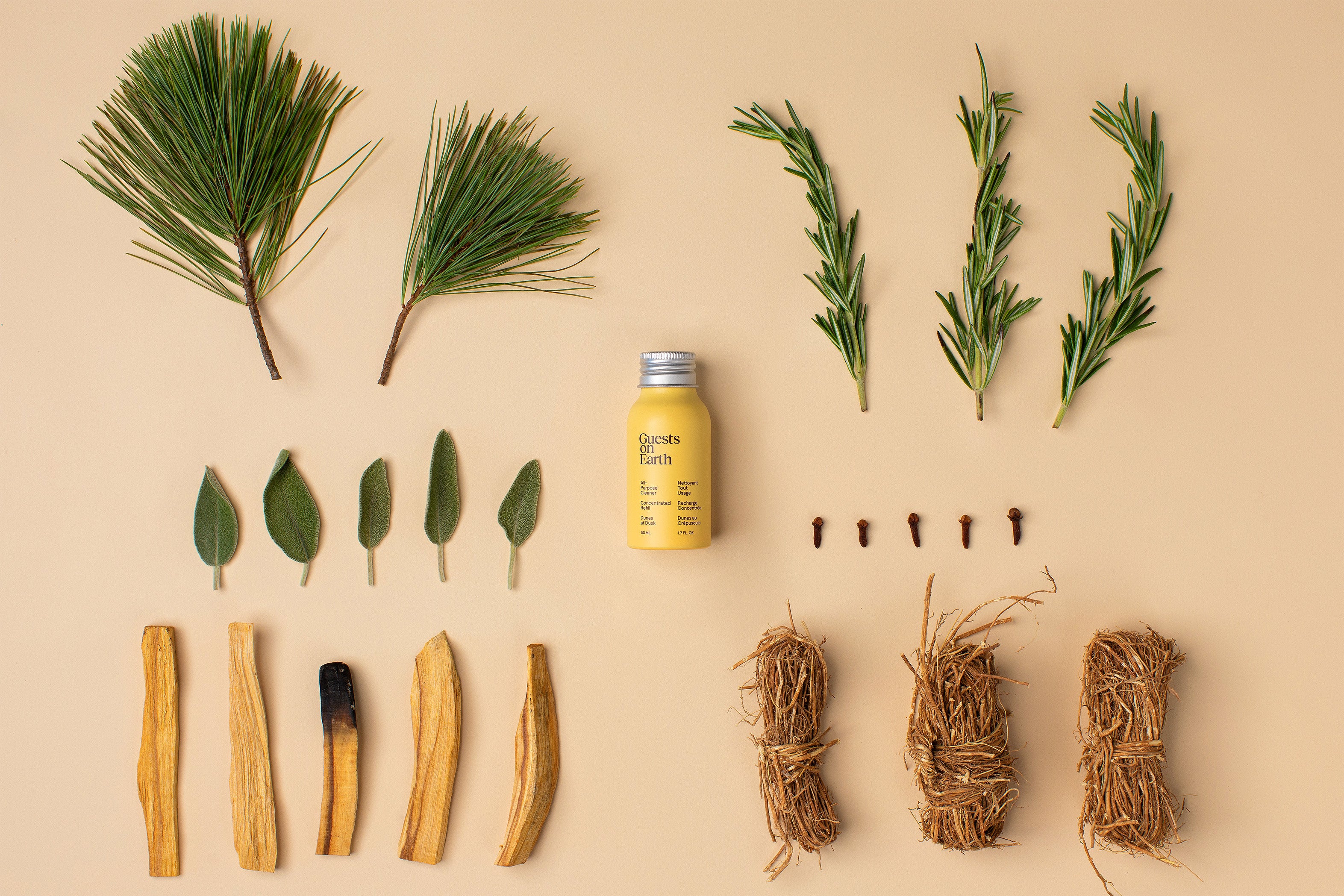
Woodlands
We worked with expert perfumers to deveop category-defying fragrances.
Woodlands was designed to make you feel like you're talking a calming, refreshing walk through the pines.
Triethyl Citrate
What is it: Triethyl Citrate (TEC) is a versatile solvent for oily products, crystals, powders and resins. It is a modified natural organic ingredient having 100 % renewable carbon source. It is also eco friendly, biodegradable and non-toxic.
Derived from: Citric acid.
Why we use it: To help the essential oils blend together. TEC is a safe replacement for toxic Phthalates.
EWG Score: 1
Cedrus Atlantica (Cedarwood) Bark Oil
What is it: A warm, woody scent.
Naturally derived from: Cedarwood bark
Why we use it: It promotes a relaxing environment and eases tension.
EWG score: 4
Juniperus Virginiana (Virginia Red Cedar) Oil
What is it: It has a woody, balsamic scent
Derived from: Cedar bark.
Why we use it: It’s grounding, balancing and creates a calming atmosphere.
EWG score: 4
Lavandula Hybrida (Lavandin) Oil
What is it: Lavandin is a hybrid plant produced via the cross-pollination of the Lavender varieties and has a clean, sharp and refreshing scent.
Derived from: Lavandin stalks and flowers
Why we use it: For its bright and intense aroma, with a fragrance body that is more herbaceous and camphoraceous but still has light, underlying touches of Lavender's sweet-floral scent.
EWG score: 2
Amyris Balsamifera (Amyris) Bark Oil
What is it: A refreshing aroma that helps to relieve stress.
Derived from: Bark of the Amyris tree.
Why we use it: It’s often used as a "fixative," to extend the fragrant life of a blend.
EWG score: 1
Eugenia Caryophyllus (Clove) Flower Oil
What is it: A stimulating and energizing oil that produces a warm, woody aroma.
Derived from: Clove flowers
Why we use it: For its interesting balance of warm and energizing fragrance,
EWG score: 3-4
Pogostemon Cablin (Patchouli) Leaf Oil
What is it: A muskysweet fragrance - it’s woody, sweet and spicy.
Derived from: Leaves of the patchouli plant.
Why we use it: For its grounding, earthy aroma.
EWG score: 1
Citrus Aurantium (Bitter Orange) Leaf Oil
What is it: A citrusy and fruity aroma, sweet orange with grapefruit like undertones.
Derived from: Orange peel.
Why we use it: For its zesty, fresh properties.
EWG score: 1-3
Abies Balsamea (Fir) Needle Oil
What is it: A coniferous, fresh and fruity terpenic scent.
Derived from: Needles and twigs from the Fir tree.
Why we use it: For its calming, anxiety-reducing properties.
EWG score: 1-3
Thuja Occidentalis (Cedar) Leaf Oil
What is it: A lively, fresh and woody camphoraceous scent.
Derived from: Cedar leaves.
Why we use it: It clears the airways and regenerates the ambient air, with antiseptic and antibacterial properties.
EWG score: 1-4
Carum Petroselinum (Parsley) Seed Oil
What is it: Parsley Seed Oil has a sweet, warm spicy, herbaceous aroma that is warming and rounding.
Derived from: Parsley leaves and seeds.
Why we use it: Parsley Seed Oil helps promote balance, calm and relaxation.
EWG score: 3
Vetivera Zizanoides (Vetiver) Root Oil
What is it: An oil with a moderate woody-earthy aroma.
Derived from: Roots of the vetiver plant.
Why we use it: Known as “the oil of tranquillity,” vetiver is grounding, sensuous and deeply calming.
EWG score: 2
Rosmarinus Officinalis (Rosemary) Leaf Oil
What it is: An essential oil with a fresh, herbal scent.
Derived from: Leaves, flowers, buds of rosemary.
Why we use it: For its rejuvenating scent.
EWG score: 1
Salvia Sclarea (Clary Sage) Oil
What it is: Clary Sage is known to induce feelings of relaxation, clarity, and calmness. Are you sensing a pattern here?
Derived from: Leaves and buds of Clary Sage.
Why we use it: For its cleansing and clarifying properties.
EWG score: 1
Boswellia Carteri (Frankincense) Oil
What it is: Known as “the king of oils,” Frankincense has a warm and spicy, smokey and woody aroma.
Naturally derived from: Resin of the Boswellia tree.
Why we use it: Used in aromatherapy, its sedative and comforting fragrance is believed to strengthen and invigorate the respiratory system.
EWG score: 1
Santalum Spicatum (Sandalwood) Oil
What it is: Sandalwood Oil soft and sweet, rich, woody, and balsamic.
Naturally derived from: Wood and roots of the sandalwood tree.
Why we use it: For its grounding properties, Sandalwood is known to promote a sense of peace and clarity, as well as enhancing mood.
EWG score: 1


